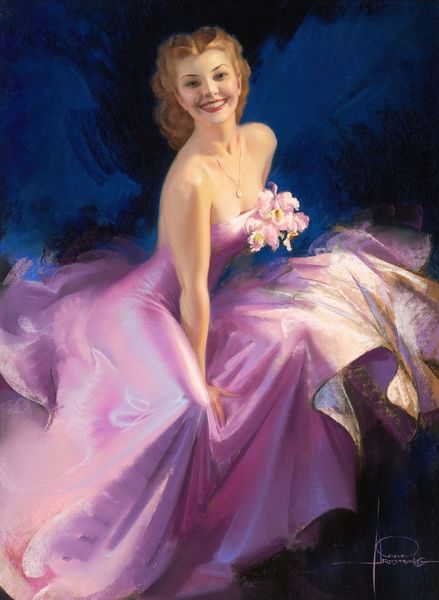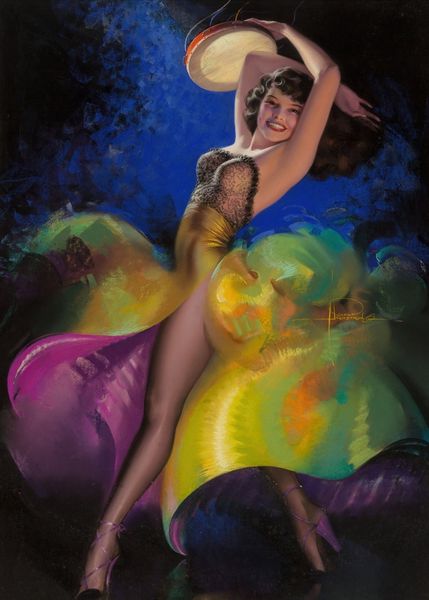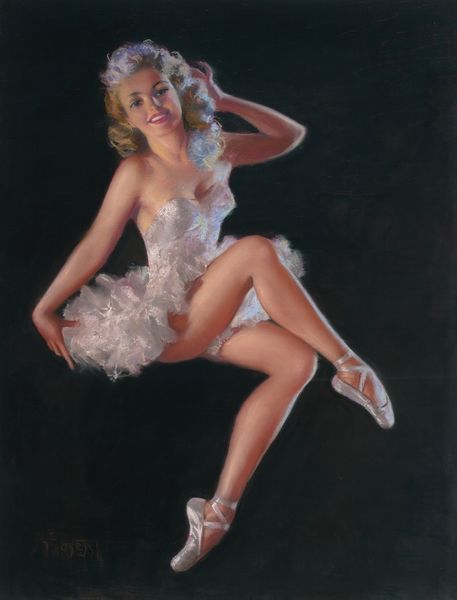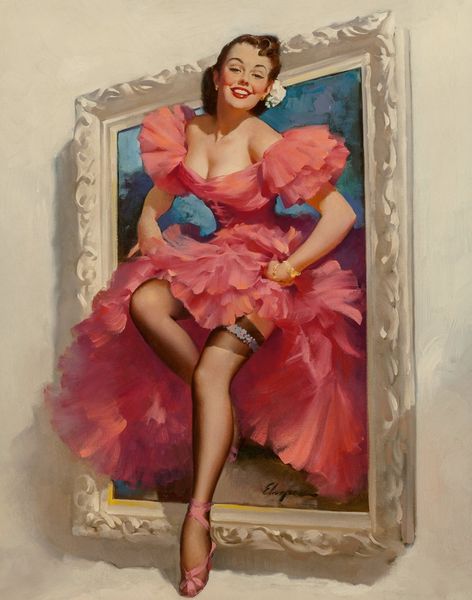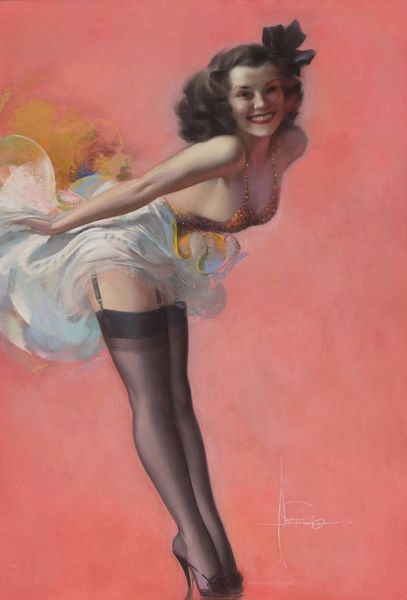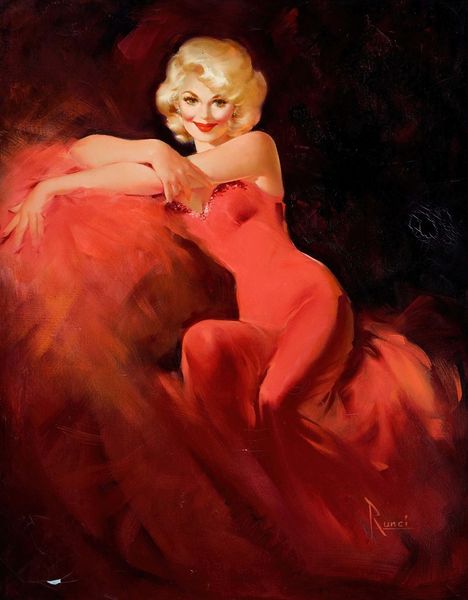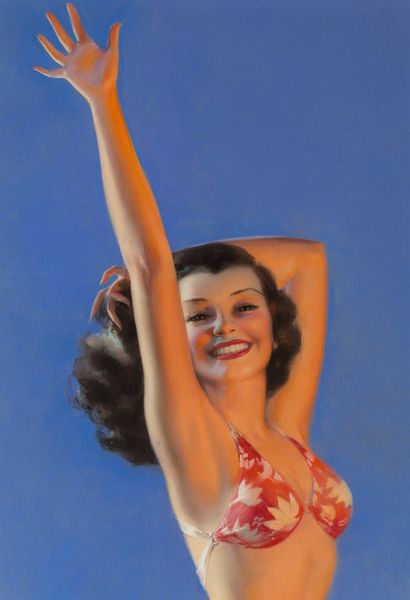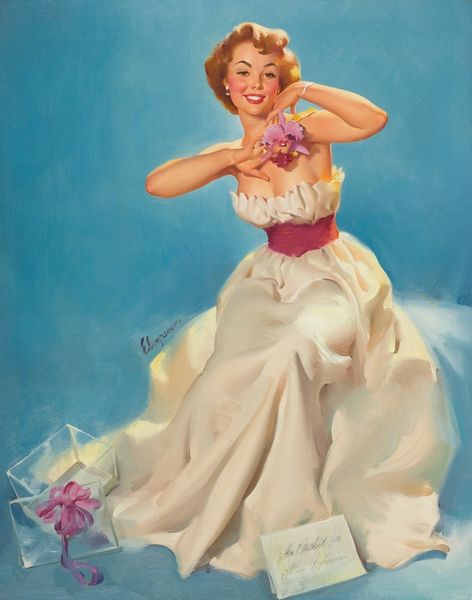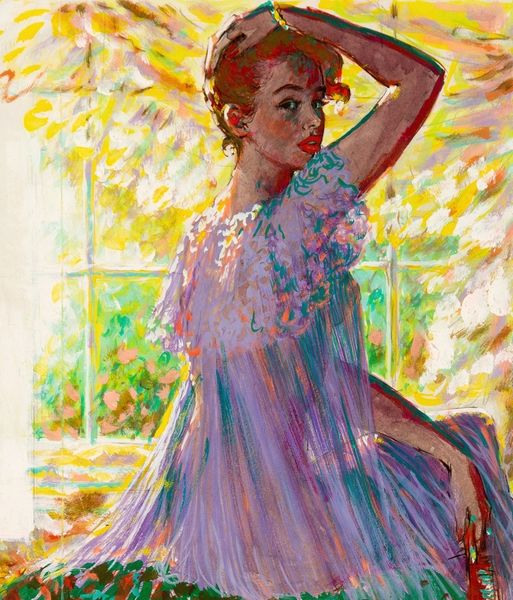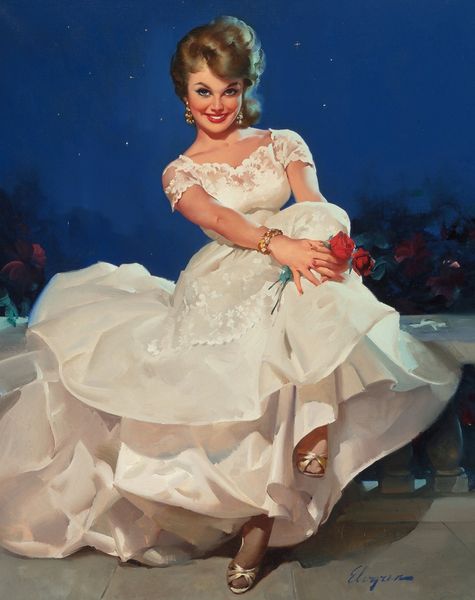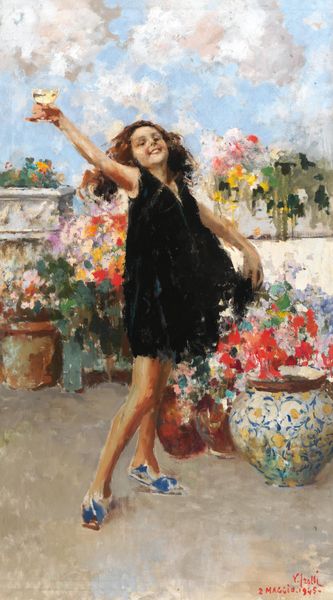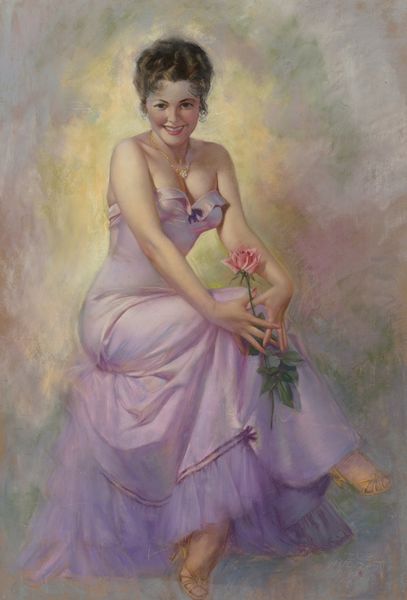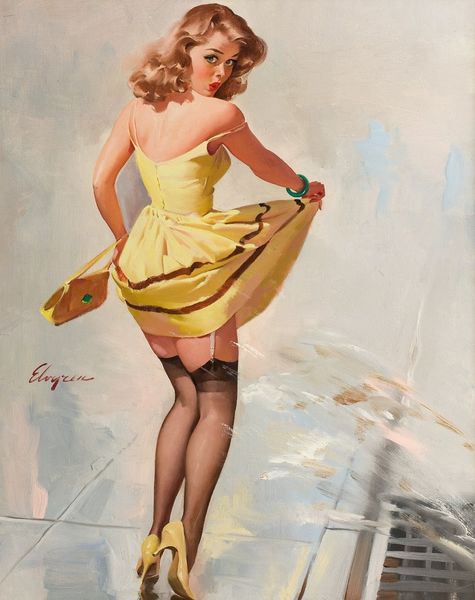
#
portrait
#
playful
#
fauvism
#
figuration
#
genre-painting
#
academic-art
Copyright: Modern Artists: Artvee
Curator: Well, this immediately strikes me as quite whimsical! The swirl of colors gives such a carefree, energetic impression. Editor: Yes, it certainly has that effect! What we're looking at here is "Pretty as a Picture" by Rolf Armstrong. This piece exemplifies the style often associated with his work in the early to mid-20th century: idealized, often romanticized depictions of women, particularly for magazine covers and pin-up art. It’s work ripe with potential for exploration in terms of the objectification of the female figure. Curator: You know, I see something deeper in these idealized images. Think about the symbolism of the swirling fabric—it echoes cyclical forces, change, rebirth. These colors, carefully orchestrated, might act as visual cues reflecting various moods. It’s more complex than mere objectification, maybe hinting at the archetypes of feminine power. Editor: But shouldn’t we be questioning what kind of “power” this aesthetic perpetuates? Armstrong built his career upon portraying women as desirable objects, reinforcing societal expectations. I find the lack of context within which we consume such images deeply problematic. Is this really power, or another gilded cage? Curator: The symbols here are definitely open to interpretation. For instance, notice the black backdrop throwing the dress’s bold, playful colours in stark contrast. That contrast evokes light overcoming darkness or innocence thriving amidst somber circumstances. Consider how the woman smiles outward—radiantly accepting her spectators. This could symbolize hope or even resilience. Editor: Perhaps. But what does it mean for us to project narratives of resilience onto an image created for a specific market, for a specific gaze? Is there true resilience when the subject has no agency within the frame, serving a pre-set patriarchal vision? We need critical engagement, acknowledging this is a carefully manufactured ideal. Curator: True, and I don’t think the imagery denies that manufacturing, however I also believe it reveals subconscious yearnings embedded within our society which is also crucial to interrogate to comprehend our socio-cultural past. Editor: Thank you, I think we were able to expose interesting, multifaceted perspectives that prompt critical examination beyond a surface assessment.
Comments
No comments
Be the first to comment and join the conversation on the ultimate creative platform.
